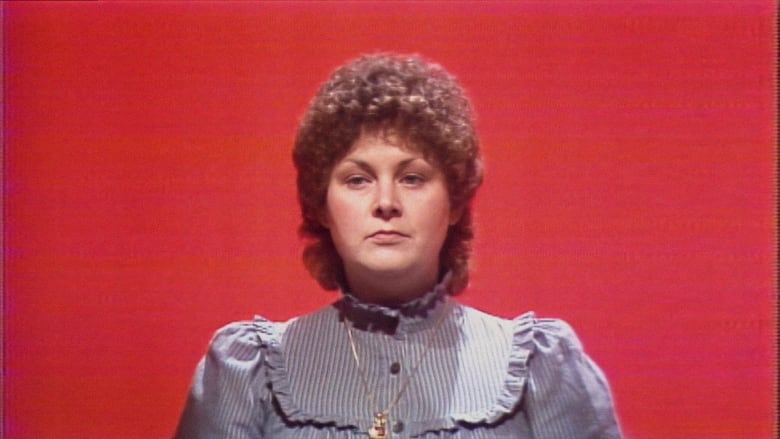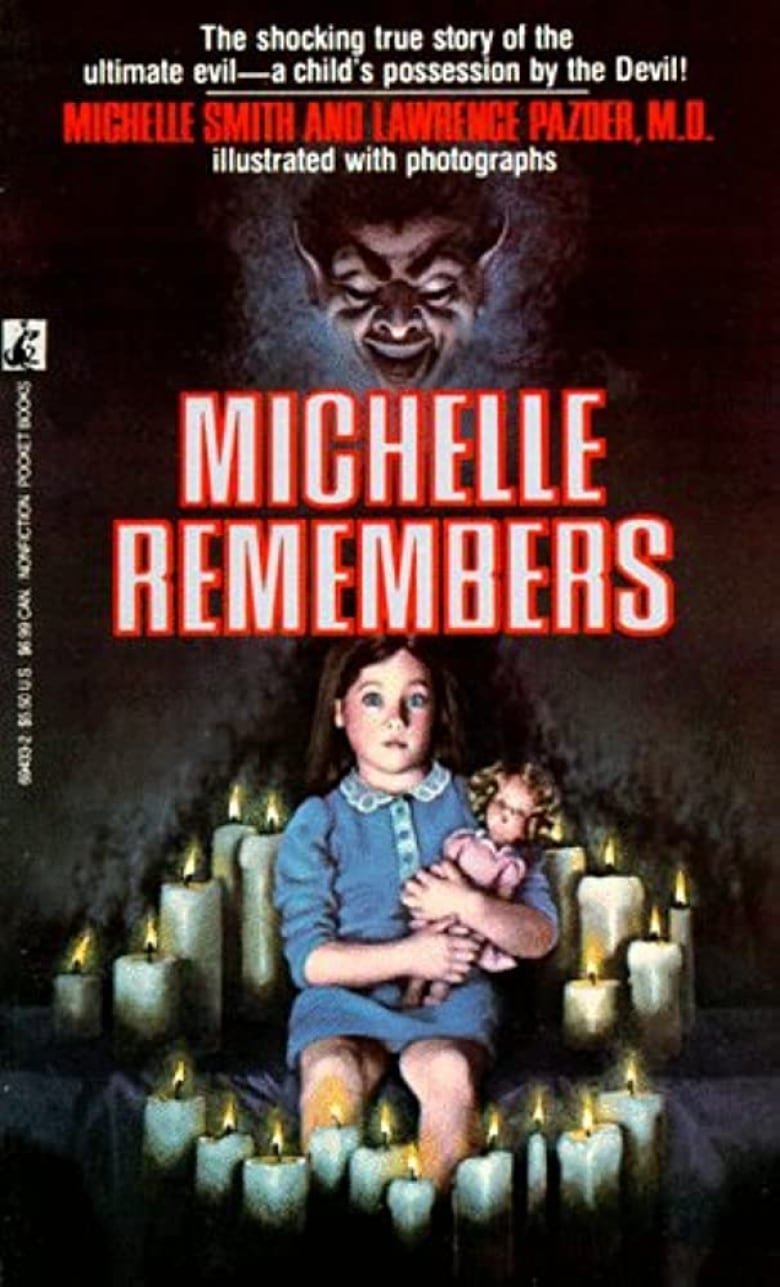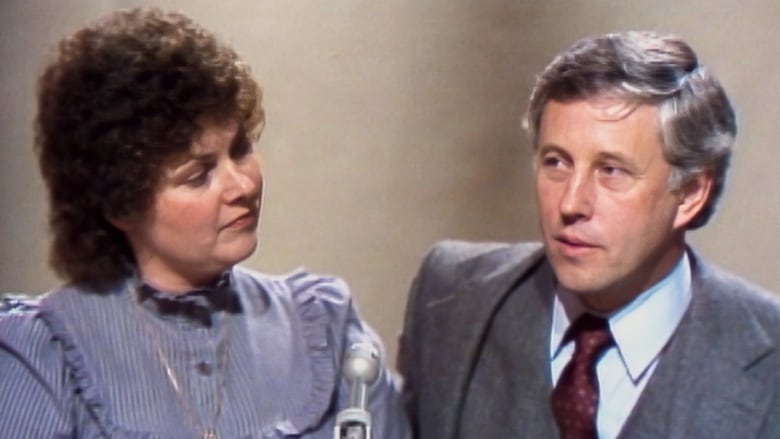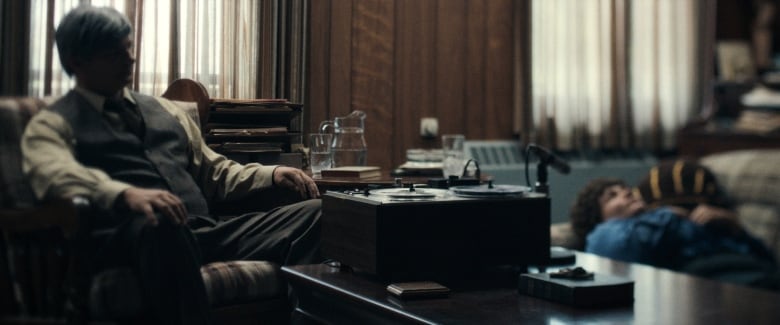The strange origins of the Satanic Panic: How one Canadian book started a worldwide witch hunt
Editor's note: we present this article as a view of our current political / cultural climate. We acknowledge the reality of documented Satanic Ritual Abuse as well as the effects of “Satanic Panic.” Please research all these topics thoroughly.

There was a time when Satan was everywhere — or he seemed to be, at least. During the '80s and '90s, the devil was always making headlines. It was the era of the Satanic Panic, a moment in history when heavy-metal and tabletop gaming weren't just the stuff of nerdcore, but a serious moral threat.
That's the poppier side of the Panic, though — the sort of thing you'll see referenced on Stranger Things. At the time, the hysteria went deeper than parental pearl-clutching over Judas Priest and Dungeons & Dragons. It gave very-real credence to false reports of fantastical horror, rumours that destroyed lives and led to countless wrongful convictions.
Among the more infamous examples, there's the “Martensville Nightmare,” the story of a daycare in small-town Saskatchewan that was accused of harbouring a murderous cult. As recounted on the CBC podcast Uncovered, nine people there would ultimately face charges despite a complete lack of evidence. Similar cases cropped up worldwide, as law enforcement was trained to identify the signs of “Satanic Ritual Abuse.”
How the hell did it happen? That story begins here — in Canada — and it's captured in a new documentary, Satan Wants You, which premieres Thursday at the Hot Docs Festival in Toronto before screening at the Calgary Underground Film Festival, Northwestfest (Edmonton) and DOXA (Vancouver).
Written and directed by Vancouver-based filmmakers Sean Horlor and Steve J. Adams, Satan Wants You reveals the untold history of the book that sparked the Panic, Michelle Remembers. Published in 1980, Michelle Remembers was written by Dr. Larry Pazder, a Victoria psychiatrist, and his patient Michelle Smith, a local housewife who'd sought treatment after a miscarriage.
Under Pazder's care, Smith underwent “recovered-memory therapy” — a practice that's since been discredited — and the book recounts their extensive sessions together. The result was a best-selling work of horror, a memoir with a paperback tagline that promised the same checkout-line thrills as a V.C. Andrews joint: “The shocking true story of the ultimate evil — a child's possession by the Devil!”
That child was Smith, and her nightmare began at the age of five. It was then, Smith claims, that her mother gave her away to a Satanic cult. For 14 months, she would be held captive and tortured, witnessing ritual murders and mutilations, many involving babies. The public gobbled it up like so many cannibalized corpses, and as book sales took off, its authors became regular fixtures on TV, appearing on everything from Oprah to CBC's Midday. Clips from their interviews appear throughout the doc. Perhaps more incredible still, Pazder and Smith were quickly established as authorities in “Satanic Ritual Abuse.” Psychiatrists and members of law enforcement would turn to them as experts on this brand new subject.
Satan Wants You revisits that history, while including voices that were conspicuously absent during the duo's time on the talk show circuit. Members of Smith and Pazder's families appear on record for the first time. (The doctor and patient would later marry.) And in unpacking the origins of the Satanic Panic, the film touches on present-day conspiracy theories from Pizzagate to QAnon.
Since the film's international premiere at the SXSW Film & TV Festival this past March, the filmmakers have watched younger audiences react to the doc with wonder … and terror too. “There's been some people who have watched it and they were flabbergasted,” says Adams. “They were like, ‘I had no idea that this happened.'”
As children of the '80s, the filmmakers themselves were already familiar with the subject — especially Horlor, who grew up in Victoria. CBC Arts spoke to them both via phone about tracing the origins of the Satanic Panic and how the whole film changed when they received a package from an anonymous sender. Its contents? A tape from Smith and Pazder's therapy sessions.
What was your connection to the book? How did you each discover it?

Steve J. Adams: So in 2018, Sean and I were working on a series about books and authors in B.C. [for Knowledge Network]. and to do our research we had about 100 books presented to us.
Number 50 was Michelle Remembers. I was like, “What is this book?!” And Sean looked at it and he was like, “Oh god, this book.” (laughs)
Sean Horlor: I actually grew up in Victoria right after that book was published. That was my childhood. Larry and Michelle — they lived in a big house overlooking the ocean about 10 minutes down the road from my family, and they were everywhere. Like, they were on the radio, they were in the newspaper, they were on television all the time.
As a kid, I understood that they were connected to all of the Satanic Panic that was happening everywhere. But it wasn't until Steve and I really started looking at doing this as a movie in 2018 that I realized that their story had touched the lives of millions and millions of people around the world.
SA: We started to look into it and we realized that [the book] had this cult following online. We realized that nobody had ever done a movie about it, and so that's really where we thought, “OK, there's lots of ammo here.” We wanted to look further.
We should also say that the Knowledge Network passed on [the book documentary]. Thank god they passed! (laughs) The book — we found it had such a profound effect on the world and it was a story that originated in British Columbia. We found it really strange that they didn't want to do it, but c'est la vie.

I haven't read Michelle Remembers, but I certainly grew up during the Satanic Panic of the '80s and '90s, and as a kid, I had no idea it was really ignited in Canada — in Victoria, Sean, where you grew up. What can you tell me about your memories of that time? What sort of things were people saying that made you aware of what was happening?
SH: You know, in Michelle Remembers, one of the most pivotal scenes actually takes place in Ross Bay Cemetery. This Satanic cult that's abducting and murdering babies takes Michelle, buries her alive in an open grave, and then they dig her out and hold this rebirth ceremony where her mother gives her away to Satan.
So you can imagine what Ross Bay Cemetery was like growing up in Victoria at that time. It was constantly vandalized and every Halloween there were rumours that there were Satanists there and that you should never go near it. All throughout Victoria too — this is like my entire childhood — [people would say] there were stores downtown that allegedly had altars set up in the back. You had to look out for this and that — look out for people in black clothes. And you know, the queer bookstore in town, they were hotspot No. 1 where children were being sacrificed.
That's the sort of thing that you grow up with — that I grew up with. This didn't just happen to Victoria; it happened everywhere. Steven and I are queer men and a lot of the daycare cases involve queer men and women who were accused of being Satanists and abusing children. It's disturbing to know that it all started with this book, and to know how it spread and how many lives are affected.
How it was used to vilify a lot of people …
SH: Yeah.
How important were your memories to the making of the doc?
SH: Yeah, well, the one thing that we learned making this doc is don't trust your memory. (laughs)
SA: Talking about the memory element, I think one of the things I've been most fascinated about is just how people our age have kind of completely forgotten that this happened or didn't know that it happened. Showing the film to different age groups, people who lived through it are like, “Oh yeah, I remember this.” People our age are like, “This happened?!” And then people younger than us had no idea that this happened.
Could you tell me about the search to find people connected to Michelle and Dr. Pazder? Being from Victoria, how did that help or hinder your chase to involve them in the story?
SH: The first thing I would put in an email or leave on the answering machine was letting them know that I'm from the city. I think that helped. I think there was at least some common ground knowing that we all have experienced this together in the same place.
We always talk about Larry's first wife, Marylyn. It took a lot of digging to find her. And then once we called her, she picked up the phone and talked to us for an hour straight. It was like 40 years had not passed at all. That's how intense this was for the family.
There's this weird thing during the Satanic Panic, and it's briefly touched on in the film: when Michelle and Larry and other victims of Satanic ritual abuse, especially adult survivors, were on television shows — you know, American daytime talk shows like Sally Jessy Raphael — their family members were never invited. And it's a weird thing, right, that you'd have an hour-long episode with someone saying, “Oh yeah, my family did all this to me as a kid and they're Satanists and killing babies.” And then the family never has a say. That was really important for us. We really wanted to give the family members a chance to say their piece. Finally.
Of the folks who appear in the doc, who had never gone on record before?
SA: Marylyn had never spoken. [Her daughter] Theresa Pazder had never spoken. Charyl, Michelle's sister, had never spoken. Cheetie, Michelle's friend, had never spoken. For the most part, anybody that was closely connected to Michelle and Larry had never had the opportunity to just speak about what happened to them.
They had never been approached before you started work on this project?
SH: They were approached.
SA: A lot of times. Like, Charyl was frequently approached.
SH: Some of them said no at the time, you know, and understandably.
Marylyn — she kept all the receipts. She showed us her binders that are full of newspaper articles, bills, records, handwritten letters. Every time an investigator would come to Victoria during the Satanic Panic to sort of look into Michelle Remembers, Marylyn would help them, but she didn't actually comment and want to be public, and now this is her time. We are so, so, so grateful that she decided to trust us with her story.
Did she express why she wanted to say something now?
SA: I think she just always felt this need to try to rectify the situation and try to help in any way that she could. We talked to her for quite a long time before we actually interviewed her, and by the time we got there, she was really ready to do it. Like Sean said, we're really grateful that she did.

At what point in the process did you get access to the therapy recordings? It's a bit mind-blowing to actually have Michelle's voice in the film.
SA: So … (laughs) we were in the last two months of editing, and we got a tape out of the blue from an anonymous sender. It kind of blew our minds that we actually got our hands on one of those.
SH: Yeah, getting that tape was the most rewarding and also one of the most challenging things about the film. We had basically made an entirely finished film and then had to go back and …
SA: Reshuffle.
SH: Yeah.
How much tape were you given? How many minutes did you have access to?
SA: The tape itself is 60 minutes. It's kind of a strange tape because within that hour, there's about 20 minutes of actual spoken words. The majority of it is, like, screaming. It's weird audio to listen to. It's very visceral.
SH: There's this push and pull in our film — a conflict between what is actually real and what has happened and is there a villain, is there a victim? That tape, I think, encapsulated the spirit of the film that we wanted to make.
Tell me more about that. How did receiving the recording change your understanding of what happened?
SA: It really contextualized what was happening. One of the things that I was blown away by was when you actually hear what's on the tape, you can go into the book and you can see the transcripts. You can see it word for word.
But yeah, you hear how they were actually communicating and you hear Michelle's side of it — what she's going through as she's trying to, like, process these recovered memories. And you can kind of tell that something's up.
What do you mean by something's up?
SA: You know that she's not sure.
SH: Yeah, she's in pain and it's very hard to listen to. At the same time, the other things that are said make you question what is happening. I don't want to spoil the ending. Anyone who watches the film, whether it's in a theatre or at home, you have to watch to the very end. No spoilers! (laughs)
There's this push and pull in our film — a conflict between what is actually real and what has happened and is there a villain, is there a victim?– Sean Horlor, filmmaker
Apart from giving you an ending for the film, the fact you got the tape so late in the process: how did it change the doc? Did it?
SH: I think from a filmmaking perspective, the tape added a verité component that we weren't sure that we were going to have in the film. And it is raw, right? When you're doing a doc like this, you're interviewing people about the past and reconstructing it to some extent. But the tape is the tape, you know, and it's like it stands on its own.
We wanted to basically leave the final question of the film with the audience. You know, it is a very polarizing exploration of two people and the two lives that collided together and caused this horrible event in human history. And we wanted to leave it with the audience to decide who has responsibility. How did this all come together? And is there somebody to blame? Should there be somebody to blame?
The overarching question of how this all happened: by the end of the film, you connect the Michelle Remembers story and the Satanic Panic to conspiracy theories that are prevalent right now. Pizzagate, QAnon. Was that thread always going to be part of the story, or what led you to make that connection as you were working on the film?
SA: When we started the research process, QAnon and Pizzagate were very much in the media. And as we were reading about what was happening with Michelle Remembers and the Satanic Panic — I mean, it's undeniable to see the connection between the two.
Honestly, we weren't sure if there was going to be enough of the Michelle Remembers story to carry a film and we thought we were going to have to focus more on the present-time. But as we began to find more and more people — and figure out more and more of the story with the incredible access to the archive that we had — we just realized that there is more of a story that existed.
SH: Like, archive documentation showing that the book was used to create checklists for law enforcement and mental health professionals to go and investigate Satanic ritual abuse crimes in their communities. I mean, when you start seeing that — having never seen that anywhere — we were like, this is right. Like, follow our instincts. It has to be the origin story of the Satanic Panic. Follow, follow, follow.
This conversation has been edited and condensed.
Satan Wants You premieres at the Hot Docs Festival in Toronto on Thursday, April 27 and will air on the documentary Channel Sunday, Oct. 1 at 9 p.m.
This “Eyes on Trafficking” story is reprinted from its original online location.
Fair Use Notice: The PBJ Learning Knowledge Vault is dedicated to advancing understanding of various social justice issues, including human trafficking and related topics. Some of the material presented on this website may contain copyrighted material, the use of which has not always been specifically authorized by the copyright owner. We are making such material available in our efforts to promote education and awareness of these important issues. There is no other central database we are aware of, so we put this together for both historical and research purposes. Articles are categorized and tagged for ease of use. We believe that this constitutes a ‘fair use' of any such copyrighted material as provided for in section 107 of the US Copyright Law. In accordance with Title 17 U.S.C. Section 107, the material on this site is distributed without profit to those who have expressed a prior interest in receiving the included information for research and educational purposes. For more information on fair use, please visit: “17 U.S. Code § 107 – Limitations on exclusive rights” on Cornell Law School's Legal Information Institute.
 ABOUT PBJ LEARNING
ABOUT PBJ LEARNING
PBJ Learning is a leading provider of online human trafficking training, focusing on awareness and prevention education. Their interactive Human Trafficking Essentials online course is used worldwide to educate professionals and individuals how to recognize human trafficking and how to respond to potential victims. Learn on any web browser (even your mobile phone) at any time.
More stories like this can be found in your PBJ Learning Knowledge Vault.
EYES ON TRAFFICKING
This “Eyes on Trafficking” story is reprinted from its original online location.
ABOUT PBJ LEARNING
PBJ Learning is a leading provider of online human trafficking training, focusing on awareness and prevention education. Their interactive Human Trafficking Essentials online course is used worldwide to educate professionals and individuals how to recognize human trafficking and how to respond to potential victims. Learn on any web browser (even your mobile phone) at any time.
More stories like this can be found in your PBJ Learning Knowledge Vault.
